After our visit to Tana Toraja in mid-August, Holly and I headed back over the mountain pass to Palopo, then turned northward and eastward around the shore of the Gulf of Bone. Overnighting in the transit town of Tomoni, we then began the long journey into Central Sulawesi, climbing up the switchbacks of the Trans-Sulawesi Highway.
This is the primary road connecting the more densely-populated region in South Sulawesi to more sparsely populated Central Sulawesi. Trucks belching diesel fumes ground up and around the switchbacks of the road, which was so steep in places that I needed to put the jeep into L4 to keep from stalling behind the slowly-moving behemoths. After a long day of crawling over the mountain roads we arrived at bucolic Lake Poso, about 60km south of the town of Poso. The valley is a continuation of the same rift formation that created Lake Matano, which I had visited earlier in the trip.
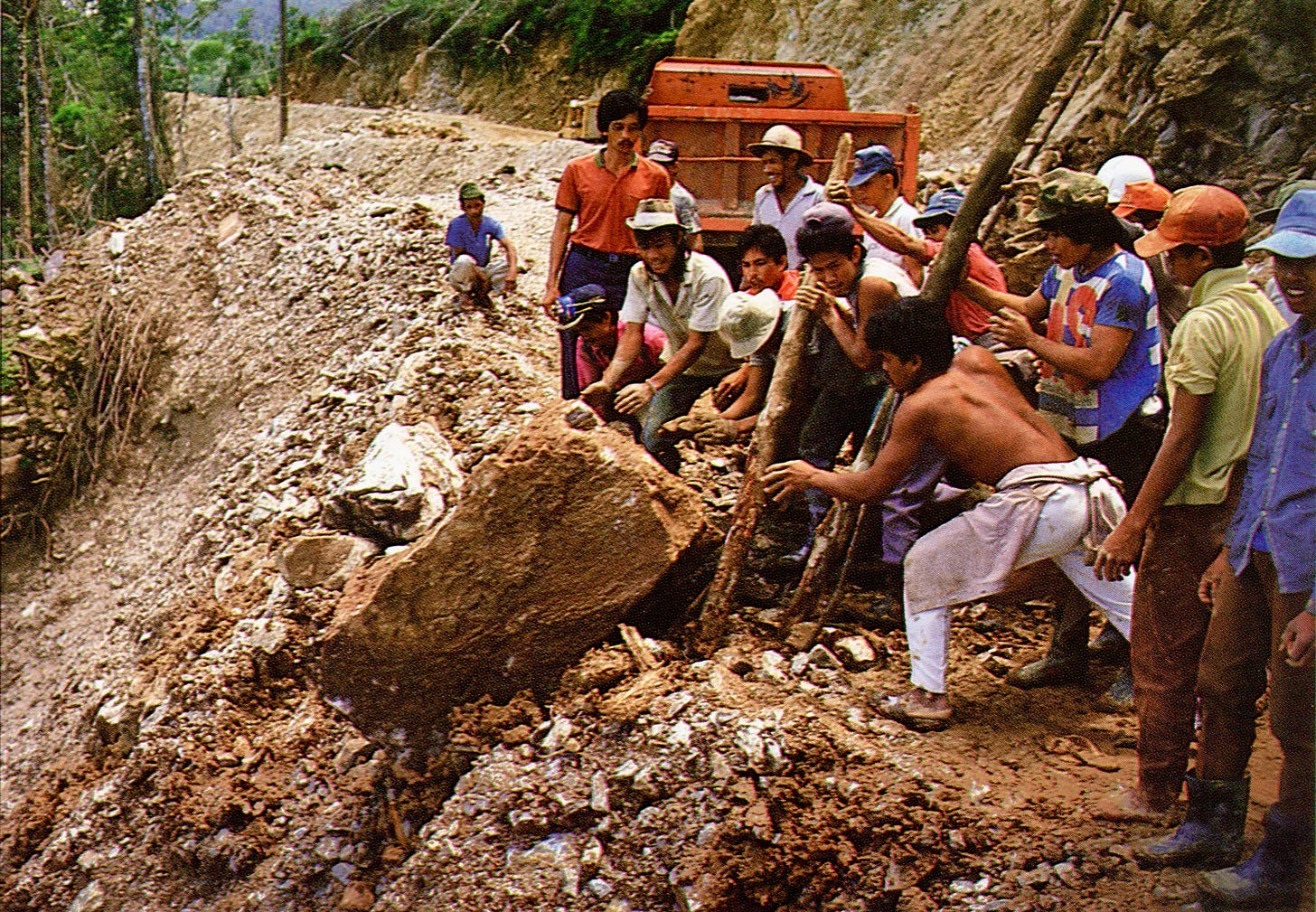
As exhausting as driving the Trans-Sulawesi is today, it’s a massive improvement compared to the time before the surfaced road was built in the 1990s when the towns and villages of Central Sulawesi were linked to the outside world via small dirt roads and sporadic ferries serving the larger coastal settlements. We would get a taste of that era’s roads soon enough.
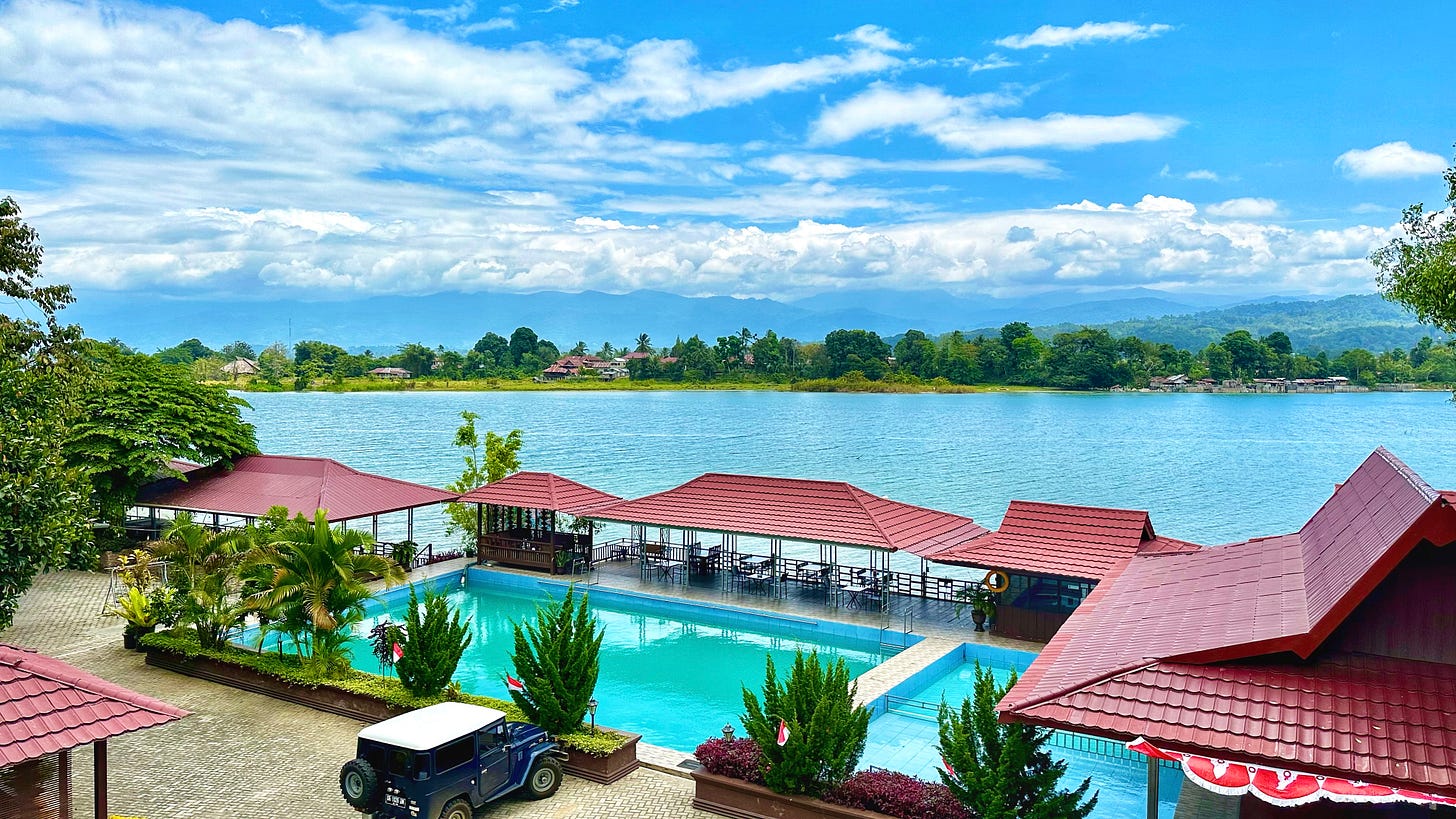
We arrived at Lake Poso in the late afternoon, ready to relax after the long journey from Tana Toraja. It was great to finally be off the highway and settled for the next week, apart from our jaunt across the imposing mountain range in the distance to the Bada Valley. The memory of the jeep overheating in South Sulawesi before the engine replacement was still prominent in my memory, and I knew the drive over the pass to the remote Bada Valley would be the real test.
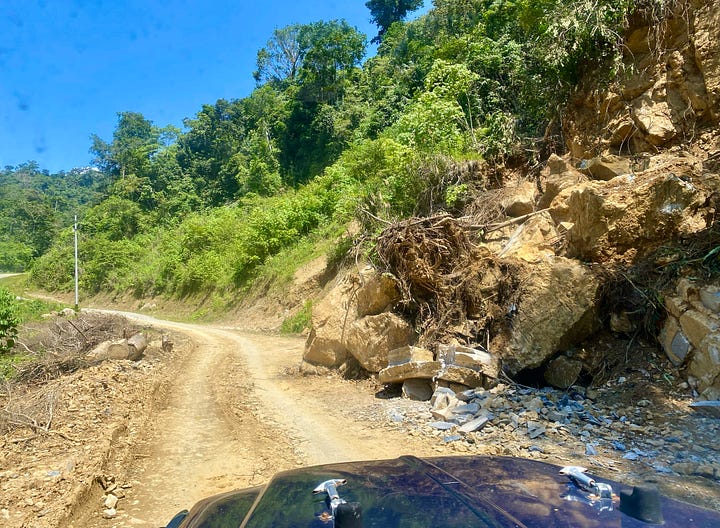

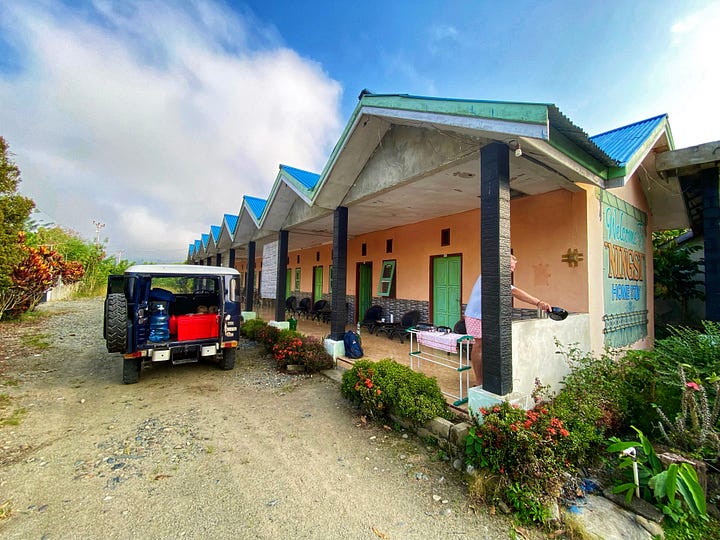

Luckily the jeep performed flawlessly, even in the muddy sections around rockslides where we needed to use the 4WD and locked wheel hubs. We made it over the pass and down into the valley in a little over two hours, with thankfully no hint of overheating.
The Bada Valley lies at the southern end of the Lore Lindu region of Central Sulawesi. The remnants of what were once large inland lakes (yes, part of the same rift valley lake system as Matano and Poso), today much of the region is a national park renowned for its wildlife. Three valleys, though, stand out for their archaeological uniqueness: Bada, Besoa and Napu.

The megaliths are spread out across the valley floor, dotted in amongst rice fields and houses. Most of the locations are difficult to find, with only a handful of signs to direct you. The largest, most impressive figure is Palindo (‘The Entertainer’, shown in the first image in this post), which has become something of a figurehead for the whole region. It is now found in a monument-like park, with some sort of visitor center structure being built to cater to the tourists that the local government anticipates arriving over the next few years.
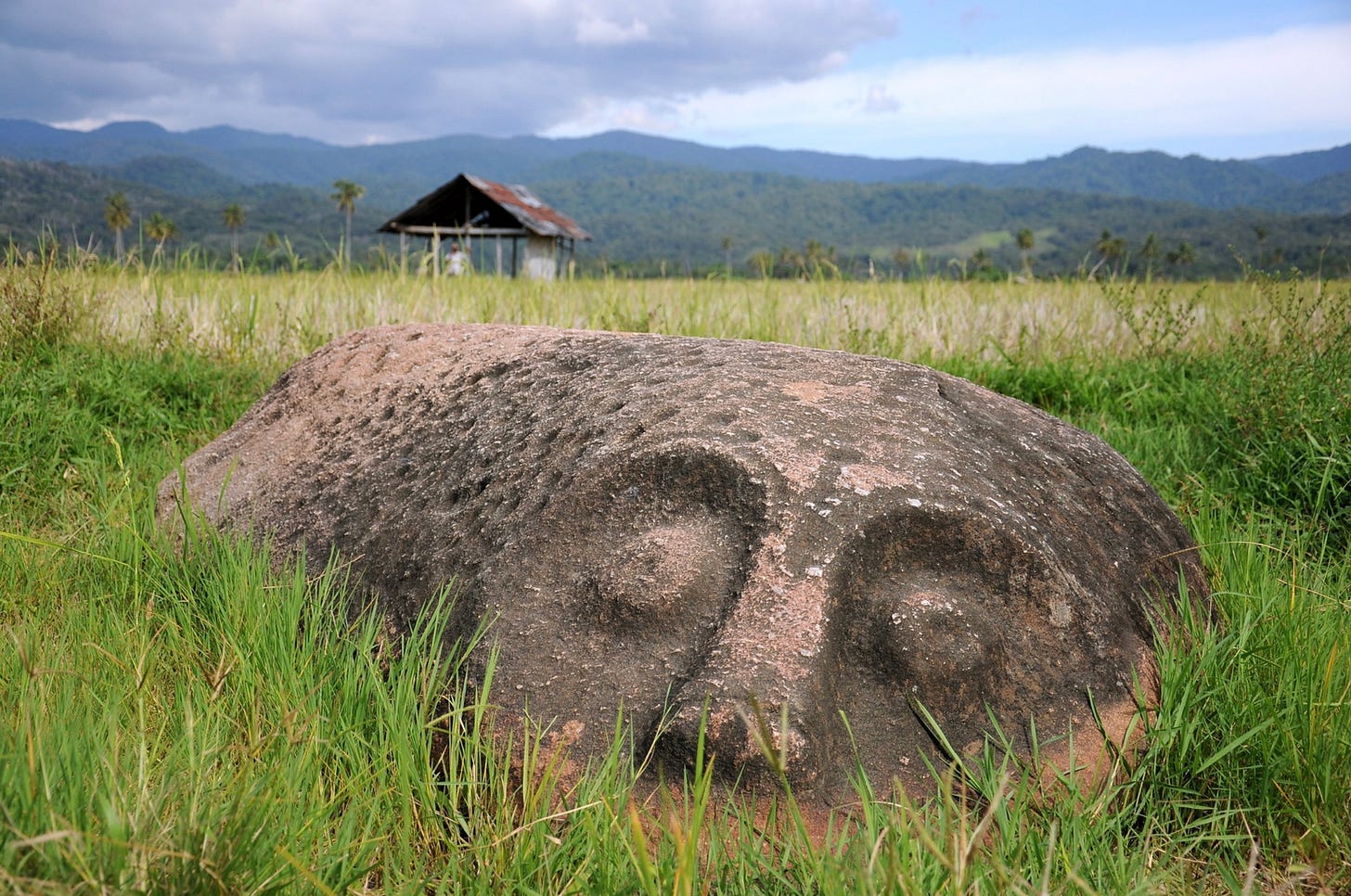
The megaliths themselves pose a significant conundrum. First, unlike the simple, unadorned vertical stone slabs still used in some Torajan cemeteries to the south, those in Bada are carved with detailed figures of humans and animals. Second, the residents of the Bada Valley have no megalithic tradition themselves, and are unsure of why they were erected. Finally, the stone seems to be exogenous to the region — it doesn’t occur naturally in the fields where the megaliths are found today, though stones that look similar can be seen in the Salo Kerangan River that runs through the valley.
Unfortunately, there has been very little archaeological work done in the valley. The work that has been done suggests that the megaliths were erected in the first millennium CE, between the 1st and 12th centuries, though the stratigraphy is rather uncertain. This places their creation in the Paleometallic era of Southeast Asia, during a time of considerable exchange between mainland Southeast Asia and the Indonesian archipelago. It is during this era, for instance, when we find Vietnamese Đông Sơn-style drums popping up throughout the archipelago, brought there initially by traders and — perhaps — settlers, and eventually cast locally. Consistent with this, there are also enormous stone jars used as burial urns in the Bada, and especially Besoa and Napu valleys. These are similar in appearance to those found in mainland Southeast Asia, most famously in the Plain of Jars in Laos.
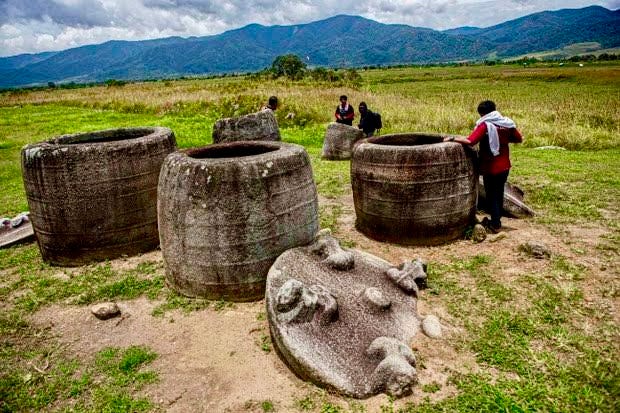
While the Plain of Jars and peak Đông Sơn eras in Mainland Southeast Asia were earlier than the tentative first-millennium CE dates that have been assigned to the Central Sulawesi megaliths, the Sulawesi dates are based on a rather perfunctory analyses, and the megaliths found there may actually date to an earlier time. It is also likely that diffusion of mainland Paleometallic culture continued in the Indonesian archipelago long after its peak era in Laos and Vietnam.

Why are the current inhabitants of the region culturally disconnected from the megaliths? It’s possible that changes in climate toward the end of the first millennium CE may have led to the depopulation of the valleys, perhaps by changing the route of the rivers, only to be replaced by other peoples at a later date. Cultures also change through time due to endogenous social factors, and perhaps this led to the abandonment of these monumental centers. At this point we simply don’t know.
Clearly, many questions remain to be answered, and the region is ripe for a detailed archaeological study. Like so much of this part of Indonesia, it remains shrouded in myth, awaiting further work to elucidate its full history. Our overnight visit to the Bada Valley was merely a short exploratory ‘dip’ into this fascinating part of Sulawesi.
Recommended overviews of Indonesian megaliths:

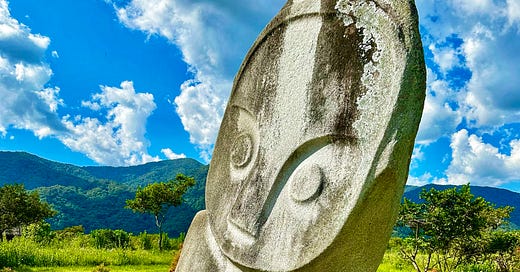




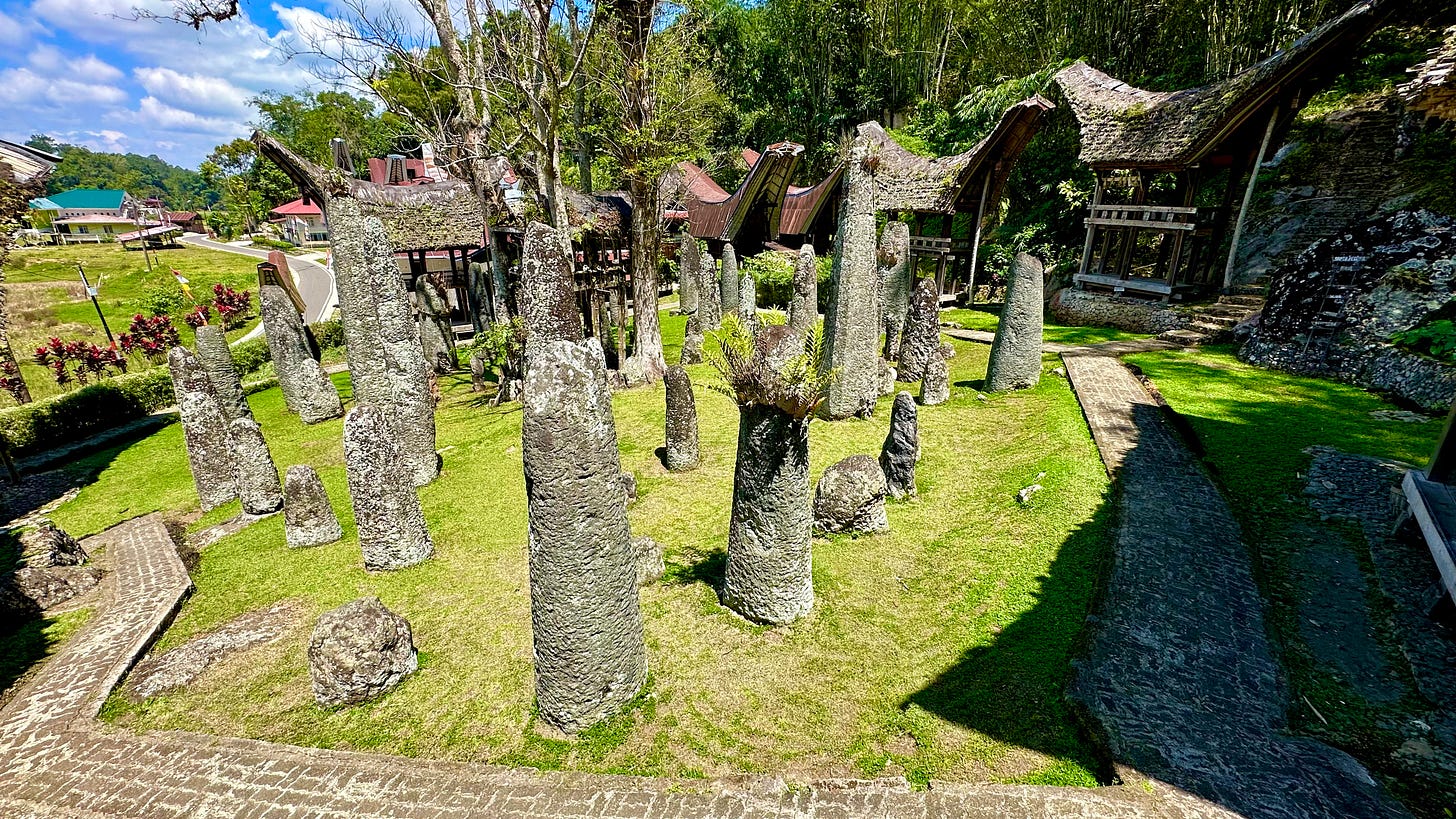
Thanks Spencer, for taking me with you and Holly into these remote and amazing places. Your photos add so much to your descriptions of terrain and images. Also appreciate increasing my vocabulary:) I will share this with friends.
There's obviously a lot more to Sulawesi than my one brief visit to Makassar.😊